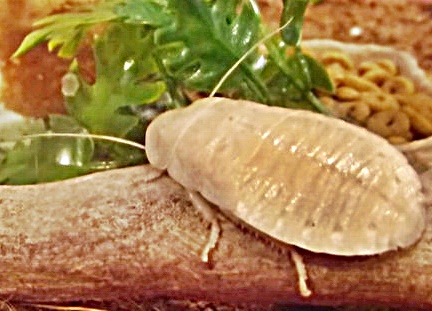
White roaches, or albino roaches, are an uncommon sight. They are however not a different species of roaches. They are just roaches who are in the stage of molting. This stage is temporary and may last from a few hours to some days, as per the type of cockroach, i.e., German cockroach, American roach, Oriental cockroach, and brown-banded roach, etc.
Molting occurs during many times in the life of roaches, and hence they may temporarily be white roaches. Depending on the stage of molting that the cockroach is at, the color of white roaches may vary from cream to white to light tan. After molting is over, the skin hardens and the critters get black their brown or reddish brown shade.
When cockroaches undergo molting, they shed not just their external shell, but they also experience a chemical reaction which results in loss of pigmentation in their bodies. The pigmentation typically gets fully replenished within a hours after molting is over.
Roaches are arthropods and do not possess a spine. They are thus invertebrates. The fact is that these pests do not have any bones at all. However, it needs to be noted that the wings, legs, and other movable body parts need to be joined to something firm so that they can be operated correctly by the muscles. This is the reason for the presence of hard bodies in most insects.
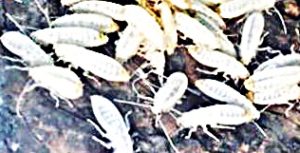
The exoskeleton or the external skeleton offers a specific design to a roach’s body sp that it can function properly. As the exoskeleton is inflexible and cannot alter in size after it gets ‘positioned’ on the roach, the insects must become bigger and grow via a process known as molting. This process allows roaches to discard their exoskeleton on a periodic basis and later replacing it with a larger exoskeleton that offers them additional space required for continued growth.
Before shedding their old exoskeleton or skin or shell, it is necessary for roaches to develop a new skin within the older shell. This is to ensure that there is retention of moisture and the different parts of their body are kept together when molting. After the new skin has grown inside, they split the old shell and come out. The new skin is flexible and soft with no color or pigmentation. It is white. Such a newly molted cockroach with new white soft shell is referred to as a white roach.
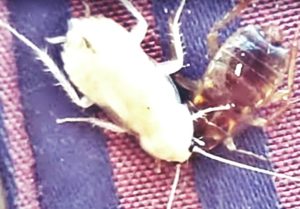
After it comes out of the old skin, white roaches wait for the new shell to harden and regain the pigmentation and its normal brown or reddish brown color. This may occur in a few minutes or a few hours or a few days after molting, according to the species of cockroach. After the white roach is full transformed to a bigger original self, it begins looking for water, food, and shelter. After the last molt, a cockroach becomes an adult and will begin locating a mate.
Do white roaches bite?
Like any cockroach, white roaches do bite, but they do not bite human beings that are alive. Only in extreme cases, when the cockroach population is in excess and food sources like exposed food particles and garbage is less, can they bite. The bites manifest in the form of irritation and swelling.
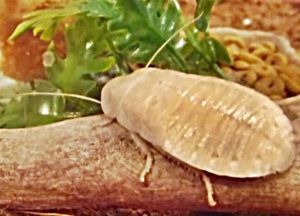
Why are white roaches a rare sight?
White roaches with their new soft, flexible skin are in danger from attack by predators or at increased risk to dehydration and drying out. Hence, they remain hidden in deep dark places, away from moving air and light. Additionally, the new shell is not firm enough and hence does not offer much help to the muscles in movements of legs, wings, and different body parts. This makes it difficult for them to run away from predators. Due to all these factors, white roaches remain hidden and are an uncommon sight.
Cockroaches tend to go into hiding whenever they sense that a molt is near. It stays there after shedding the outer shell, till the new exoskeleton hardens and re-pigmentation occurs. It will only come out of hiding, when its safe place has been disturbed. Exterminators who apply treatments inside such deep hidden places often come across loads of white roaches.
White roaches are thus nothing but temporarily white cockroaches that have just undergone molting.
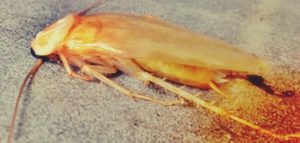
How to get rid of White Roaches
Roaches are harbingers of diseases, parasites, and varied germs. They spread different illnesses, especially in the vulnerable elderly and kids. A roach infestation in the house will also result in an unpleasant odor. Hence it is necessary to get rid of cockroaches and eradicate them from the house, irrespective of whether they are baby roaches, white roaches, or adult roaches.
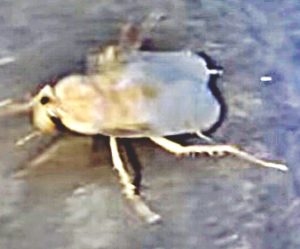
Listed below are different ways to eliminate roaches from the house:
- Sticky traps can be used to find out about the level of roach infestation in your home. These traps do not kill the critters, but keep them stuck onto it. Homeowners need to dispose of them after catching them.
- Cockroach bait will help kill some cockroaches. The pests eat the bait and take some back to their nests and other hiding places. It is important to keep the bait for some weeks, as it does not kill the full infestation. Ensure that kids and pets do not accidentally get exposed to cockroach bait.
- Insecticidal sprays can be used to kill roaches immediately. Immediate dispose of the dead bodies outside the house. Roaches eat dead bodies and the dead roaches can become a new food source.
- Sprinkle boric acid powder or borax powder in all areas that you suspect to be infested with roaches. You may apply it under stoves and appliances, around sinks, on kitchen counters, etc. These powders do not instantly kill the pests. They dry up the shell and cause dehydration and eventual death of the critters. Cockroaches may also carry the powder on their bodies back to their nest and infect other roaches.
- Clean the house regularly and keep it sanitized.
- Take precautionary measures to ensure that the three things that roaches look for in the house, i.e., food, shelter, and water are not readily available. Hence, take out the trash regularly. Fix cracks on walls and leaks on water pipes. Do not keep standing water or dishes in the sink with food sticking on them. Keep the kitchen counters and appliances clean and devoid of dirt, food, and water.
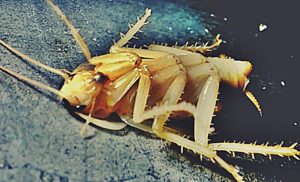

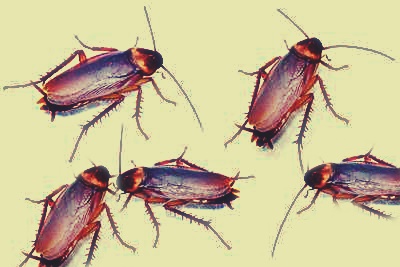

Leave a Reply